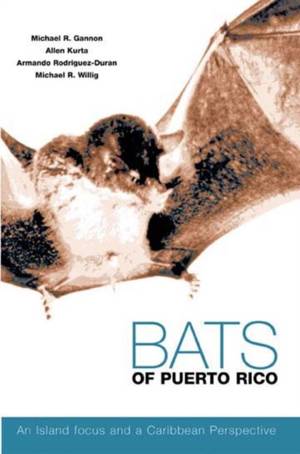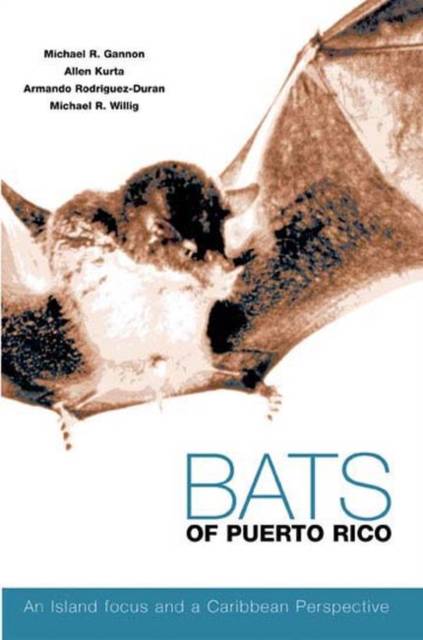
- Retrait gratuit dans votre magasin Club
- 7.000.000 titres dans notre catalogue
- Payer en toute sécurité
- Toujours un magasin près de chez vous
- Retrait gratuit dans votre magasin Club
- 7.000.000 titres dans notre catalogue
- Payer en toute sécurité
- Toujours un magasin près de chez vous
Bats of Puerto Rico
An Island Focus and a Caribbean Perspective
Allen Kurta, Armando Rodriguez-Duran
Livre broché | Anglais
33,95 €
+ 67 points
Description
"An interesting and enjoyable read. . . . Rich detail presented in well-written, logical fashion about the bat fauna of this interesting island." --Acta ChiropterologicaThe Caribbean islands are home to some of the most unusual species of bats. A number of them are endemic, living in no other region of the world. On Puerto Rico alone, thirteen different species have been found. Bats are the only naturally occurring mammals there; all others were introduced after settlement of the island, first by the Taíno Indians and later by the Spanish.Puerto Rico is important for study because of its human history, tropical climate, size, relief, and isolation from the mainland. It is a useful model for understanding how historical, geographic, and environmental factors interact in a controlled environment to affect the diversity and complexity of its resident species.This volume is the first complete compilation of the distribution, natural history, taxonomy, and ecology of the bats of Puerto Rico. The coauthors, all experienced researchers, introduce the book with a discussion of Puerto Rican ecosystems and an overview of facts and misconceptions about bats in general. The main text provides detailed descriptions of each of the thirteen Puerto Rican species, as well as illustrations of their faces and skulls. The book concludes with keys to the characters of these bats and a complete glossary. Maps show the distribution of each species on the island.Bats of Puerto Rico is designed to be an easily used source of information for the general public as well as a complete descriptive record for ecologists, mammalogists, and wildlife biologists.
Spécifications
Parties prenantes
- Auteur(s) :
- Editeur:
Contenu
- Nombre de pages :
- 224
- Langue:
- Anglais
Caractéristiques
- EAN:
- 9780896725515
- Date de parution :
- 15-07-05
- Format:
- Livre broché
- Format numérique:
- Trade paperback (VS)
- Dimensions :
- 155 mm x 231 mm
- Poids :
- 562 g







